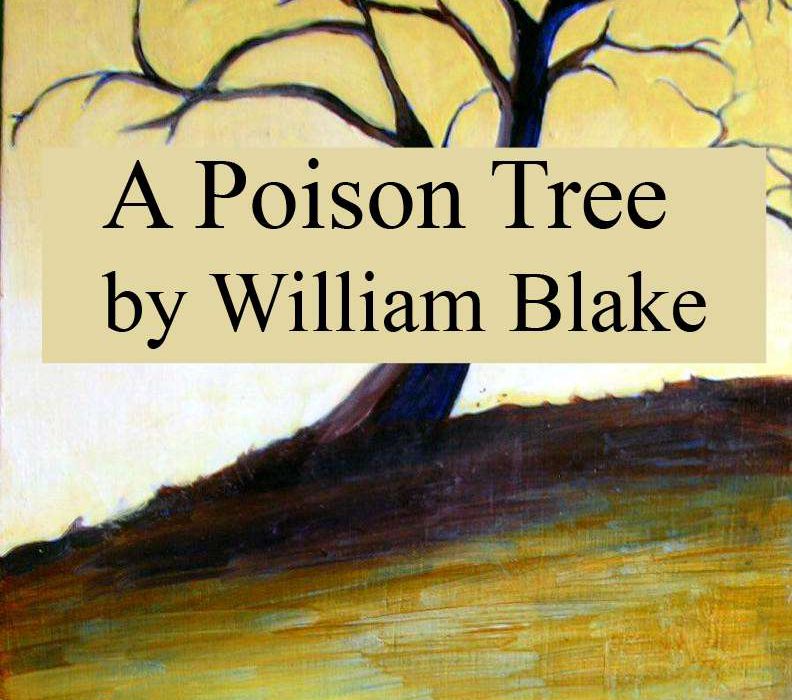A Poison tree rhyme Scheme is all about controlling anger and its expression. The poet describes different situations of anger and cases when he came across two people. William Blake in the poem provides that he know how to handle anger with a friend but it’s difficult to handle with an enemy.
This is in accordance with the conditions. The specific elements in the poem describe the situation in a simple form. The four quatrains of the poem are arranged in a rhyme scheme. The two couplets in every quatrain describe the condition of conflict and how it is handled. In William Blake’s poem, ‘A Poison Tree’, the theme of anger relates to me and my life due to my feelings and expressions of angriness.
Analysis of the Situation
The thesis statement of this poem explains that I have experienced such a situation in my life. According to the meaning of the author, in the opening statement, he was angry with his friend and it was a bad time. He explains that he was experiencing wrath and presumably this anger disappeared when he told this to the friend.
It is a normal situation and I also went through such a situation when once my friend was angry and I felt annoyed all the time, but as I told him about this, my anger turned to normal. The condition described by the poet elaborates on the linkage in life and it can be seen from the rhyme of lines.
This situation works differently when it is applied to any enemy. The enemy cannot be told about the anger. As the poet puts it up that when I did not tell him about my anger, it grew up. This phenomenon of life is quite normal that if a feeling is not elaborated, it increases.
The Poem Analysis
“A Poison Tree” by William Blake. It is a short poem that explores themes of anger, repression, and the destructive consequences of harboring negative emotions. Here is an analysis of the poem’s rhyme scheme and its themes:
Rhyme Scheme: “The Poison Tree” follows a consistent AABB rhyme scheme throughout its four quatrains. Each stanza consists of two couplets, with the first and second lines rhyming together and the third and fourth lines rhyming together. The rhyme scheme helps to establish a rhythmic and musical quality to the poem.
Analysis:
“A Poison Tree” presents a simple yet powerful metaphor for the consequences of unexpressed anger. The speaker describes how they nourish their anger towards a perceived enemy, contrasting it with the innocent and open communication they have with a friend. The poem illustrates the destructive potential of harboring negative emotions and the danger of allowing anger to grow unchecked.
The first stanza introduces the concept of the poison tree, which symbolizes the speaker’s hidden anger. The speaker reveals that they are able to keep their anger under control by expressing it to their friend, who understands and helps to alleviate it.
The second stanza, however, depicts the speaker’s decision to keep their anger hidden from their foe. The speaker chooses to nurture and cultivate their anger, allowing it to grow and bear destructive fruit.
In the third stanza, the speaker’s enemy becomes aware of their anger and approaches them, seeking reconciliation. However, instead of resolving the conflict, the speaker takes satisfaction in the knowledge that their foe is vulnerable to the poison they have nurtured.
In the final stanza, the speaker reveals the outcome of their anger: their enemy is dead, and the speaker is now able to rest in satisfaction.
Practical Situation of Life
I experienced a situation in life that when I decided not to talk with the hatred person in my life, the distances grew due to anger. Similarly, the poet talks about keeping something in the bottle and experiencing it later, it would grow intense and big. This situation is explained by the author in the lines of the poem.
Getting angry and feeling annoyed is natural but it varies with different people in life. A poison tree presents a logical reason, the structural elements are important that the poet discuss. Anger is all about the human spirit and it reflects the reasoning of the situation. The tree of poison bears the fury fruit, according to the author.
A poison tree is a beautiful poem that completely reflects the natural feelings. It is clear by the author that when I experience anger with my friend, I just tell him and get relaxed. This works in the opposite way with my enemy and I keep anger within me, as a result, it grows hard and becomes intense.
This situation of life goes along in different cases. It spread like poison in the body and pollutes the human brain and heart by creating feelings of distress, discomfort, and anxiety. Poet has genuinely explained these feelings as his own experience.
Themes:
A poison tree has multiple themes such as:
- Repressed Anger: “A Poison Tree” explores the destructive consequences of repressing and nurturing anger. The speaker’s decision to keep their anger hidden and nourished leads to its growth and eventual destructive outcome.
- The Power of Communication: The poem emphasizes the importance of open communication and expression of emotions. The speaker finds solace and resolution in confiding their anger to their friend, highlighting the positive impact that communication can have in resolving conflicts.
- The Destructive Nature of Unchecked Anger: Blake’s poem warns against allowing anger to fester and grow unchecked. The metaphor of the poison tree demonstrates how nurturing negative emotions can lead to destructive outcomes, both for the object of anger and the individual harboring it.
- Morality and Consequences: The poem touches upon moral themes by illustrating the consequences of the speaker’s actions. While the enemy is the immediate victim of the poison tree, the speaker’s satisfaction is short-lived, and the overall message suggests that revenge and harboring anger ultimately lead to negative consequences for all involved.
“A Poison Tree” serves as a cautionary tale, urging readers to acknowledge and appropriately express their anger rather than allowing it to consume and harm themselves and others.

